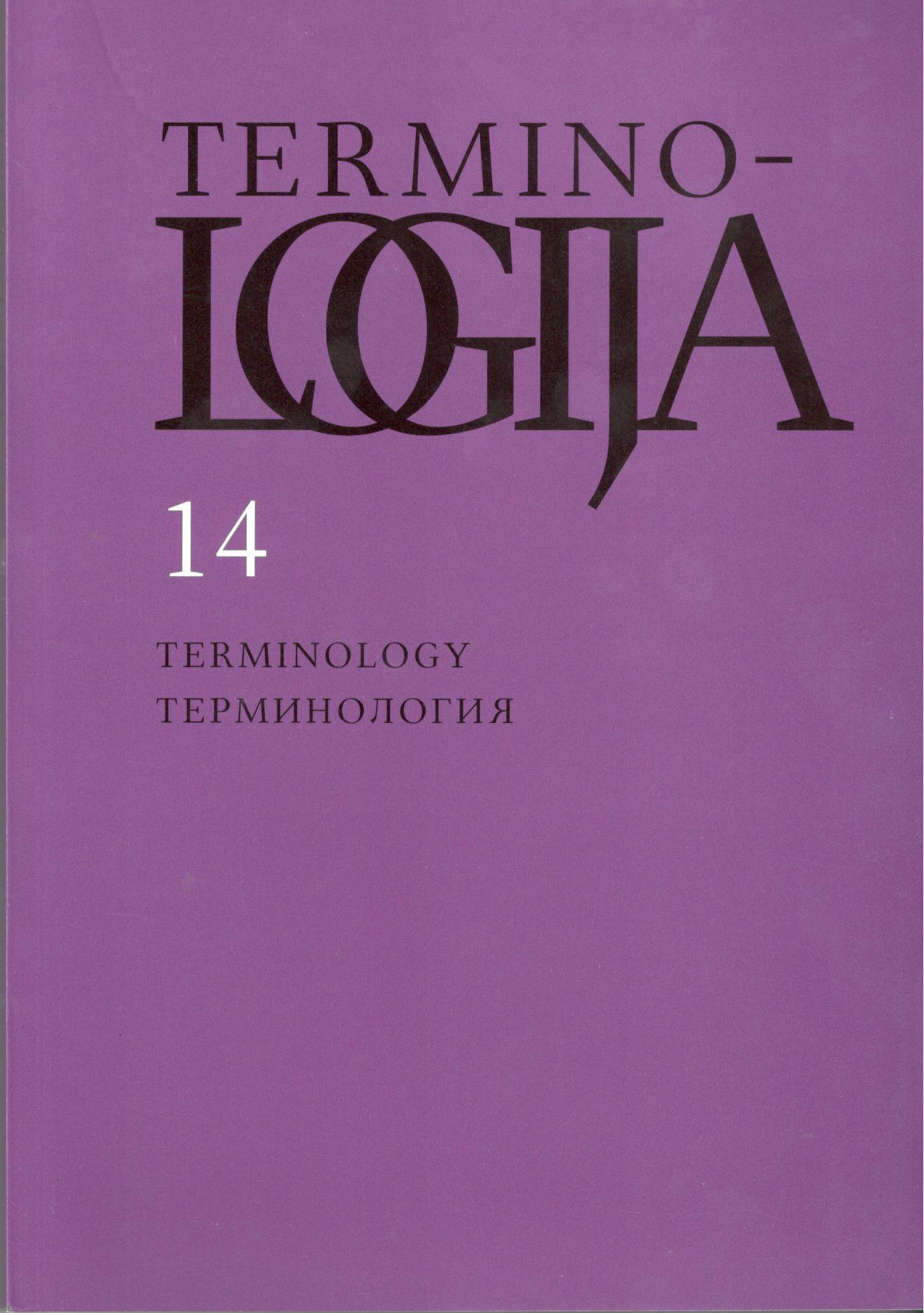Iš lietuvių literatūros mokslo terminijos istorijos: XIX amžius
From the history of Lithuanian literary terminology: the 19th century
Author(s): Asta MitkevičienėSubject(s): Language and Literature Studies, Lexis, Semantics, Descriptive linguistics, Baltic Languages, Philology
Published by: Lietuvių Kalbos Institutas
Keywords: literary terms; relation of term; terms of stylistic devices; terms of versification
Summary/Abstract: Literary science as an independent discipline in Lithuania began to develop at the end of the 19th century and the beginning of the 20th century, although literary works had been published before that. In the 19th century those works were published in Lithuanian and Lithuanian terminology of literary science began to be created. During the first half of the 19th century literary subjects were discussed in prefaces or other parts of different publications, but not in separate works. The number of literary works rose during the second half of the century when Lithuanian periodicals appeared and became more numerous. At the end of the 19th century the first history of Lithuanian literature (by J. Šliūpas), the first Lithuanian poetics (by V. Kudirka) appeared, and works on literary criticism were being published. This all determined the formation of Lithuanian literary terminology and its development. From the first literary works we can talk about semantic groups of terms, relations between terms. In the literary material of the 19th century basic literary terms (poezija ‘poetry’, proza ‘prose’), terms of versification (posmas ‘strophe’, hegsametras (now hegzametras) ‘hexameter’), names of stylistic devices (tropas ‘trope’, užtylėjimas (now nutylėjimas) ‘preterition’), names of genres of drama (drama ‘drama’, komedija ‘comedy’) etc were defined or explained. Since some of the concepts (for example, concepts of versification, of stylistic devices) were classified, relationships between terms of those concepts are visible. A merit of V. Kudirka is foundation of Lithuanian terminology of versification which is rather systematic. Lithuanian literary terminology was just being created so it is no surprise that terms used by different authors varied. In comparison with present-day Lithuanian literary terminology not only the expression of terms, but also the content has changed. For instance, terms which are now considered to be names of genres (apysaka ‘novelette’, apsakymas ‘short story’) in the 19th century were being used in a broader meaning. The changes in content of terms were determined by the development of concepts. In the 19th century Lithuanian substitutes for international terms were being sought (sutartinumas (now rimas) ‘rhyme’, atsiliepimas (now rimas) ‘rhyme’, perdalinimas (now dierezė) ‘dieresis’, išleidimas (now elipsė) ‘ellipsis’, atsigręžimas (now apostrofa) ‘apostrophe’), etymological meaning of international terms (of Latin or Greek origin) was taken into consideration (compare: perkirtimas ‘caesura’ (non-terminological meaning ‘cutting’; now cezūra), lot. caesura ‘cutting’). In literary texts of the 19th century Lithuanian terms were sometimes presented with their foreign equivalents, while a group of terms was used without Lithuanian adaptation (Pyrrhichius ‘pyrrhic’). This is a natural feature of the stage of formation of terminology. Features of expression of terms (variability, rare pronominal forms, predomination of attributes with the suffix -iškas etc.) reflect the general situation of the 19th century Lithuanian terminology and general lexis (LGP). 19th century authors of literary texts S. Daukantas, J. Koncevičius, J. Šliūpas, M. Akelaitis, J. Jablonskis, Vaižgantas etc. made comments on some Lithuanian literary terms and their usage although not each one is right and acceptable. An important matter also is the introduction of the term turinys ‘content’ (in spite of former įtalpa, įturis etc.) by J. Jablonskis, A. Jakštas’ encouragement to turn to international terms at the end of the 19th century. Appealing to tradition and striving for systematically may be felt in the comments made in the 19th century.
Journal: Terminologija
- Issue Year: 2007
- Issue No: 14
- Page Range: 110-124
- Page Count: 15
- Language: Lithuanian

